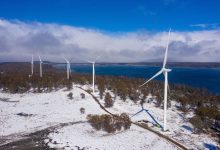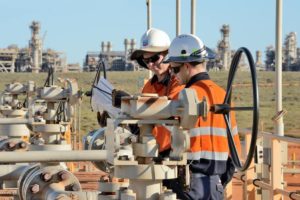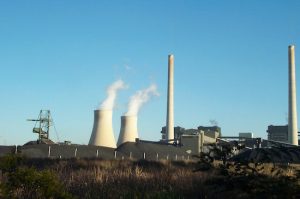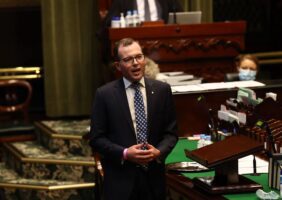Labor is promising to pull out of the controversial Marinus Link interconnector project entirely if it wins the upcoming state election in Tasmania, and wants to put money into a new state owned power company instead.
The party says it doesn’t want Tasmania to pay for Marinus, despite its newly reduced scale, given the benefits will largely go to mainland users.
Tasmanian Labor leader Rebecca White says the party wants to invest dollars saved from that project into a new ‘Tasmanian Power Co’ to support the development of wind projects in the island state.
“We will directly invest funds saved from getting out of Marinus into the state’s energy generation assets to double Tasmania’s power supply,” she says.
The proposed new company would see state owned Hydro Tasmania’s existing wind assets and its consultancy Entura combined under the ownership of Tasmanian Power Co to drive new investment in wind projects.
Cut price Marinus still too pricey for Labor
In September, significant cost blowouts prompted the current Liberal government to negotiate a reduced stake in the Marinus undersea and underground high voltage cable to 17.7 per cent, and the ability to sell that stake to the Commonwealth on commissioning.
It also cut the project down to a single 750 megawatt (MW) cable, leaving the way open for the original plan for a second cable to be built one day.
The dual-cable project was originally estimated to cost between $3.1 billion and $3.8 billion and link Tasmania’s hydro power wealth, AKA the “battery of the nation”, to the mainland.
The regulator greenlit a revenue proposal for the redesigned project in December, effectively locking it in and allowing Marinus Link to recover costs for designing and planning through to final investment decision.
It is budgeting early works at $195.5 million.
But the project is controversial with some experts saying that it’s cheaper to firm electricity and bring down power prices in Victoria by building batteries in that state, rather than a new, expensive transmission cable from Tasmania.
Hydro Tasmania in political sights
The Liberal Party is attacking Labor for its Tasmania Power Co idea, but it too wants to use Hydro Tasmania as a lever to spur more wind and solar investment.
It also wants to take equity positions in new renewables developments by allowing the state hydro company to use its state-backing and financial muscle to partner on wind and solar projects, and loosening restrictions to allow hydro projects larger than 40MW to be built without parliamentary approval, premier Jeremy Rockcliff says.
It also wants to create Renewable Energy Zones (REZ) in order to contain transmission infrastructure investment and create a new planning approval pathway for renewables.
“In our first 100 days, we will declare Tasmania’s first Renewable Energy Zone (REZ) in the North West,” Premier Rockliff says
“The REZ will designate an area where new generation projects can be built close to the transmission networks they need, and alongside the new job-creating industries they will supply.
“Tasmania’s first REZ will be located near Burnie.”
He says the first REZ will connect three wind farms and several industrial projects via the proposed North West Transmission Development, which the government is underwriting.
The Liberals are also countering Labor’s Marinus move – made in the name of prioritising power investments for Tasmanians – with its own commercial pivot for Hydro Tasmania.
Instead of expanding its remit to become a renewables company, Rockcliff is promising to redraw the current ministerial charter to change its purpose from energy generation and sales to ensuring low power prices and local jobs.
Hydro Tasmania, in a submission to the joint select committee on energy matters in this month, said the charter directs it to be a successful business.
“Over the past century, Hydro has been the cornerstone of Tasmania’s economic strength, driving the economy, investment and jobs,” Rockcliff says.
“Our new Hydro charter will ensure that every single decision that Hydro makes is driven by delivering the lowest possible power prices for Tasmanians, and enabling economic growth and job creation right here in Tasmania.”
Election cash splash also on the table
For Tasmanians who are more concerned about their present power bills, an election cash splash is also on the table, using profits from the state-owned hydropower company.
Labor plans to cap future power price rises at 2.5 per cent for the next three years, copying a Liberal government move from 2018 which capped price growth at no more than CPI for the same period of time.
It will also offer rebates for businesses when wholesale prices spike over $100/MWh.
And it is finally setting an energy efficiency subsidy scheme akin to those already rolled out in other states to provide landlords with a matched $1000 contribution per home for energy efficiency upgrades – provided the property is then released to the long term rental market for the next three years.
The Energy Saver Loan Scheme will be capped at 2500 homes. Labor is also promising $5 million for energy efficiency upgrades to public and social housing, and 2500 public and social homes.
The Greens, who could emerge with the balance of power in a newly expanded parliament in the March 23 poll, are also keen on electricity price caps. Their other main energy policy is to lift the energy efficiency grants to $2000 and make these for low income households.
The Greens policy position on new renewables is complicated by the fact that former leaders Bob Brown and Christine Milne have been vocal in their opposition to big projects such as the Robbins Island wind farm, which they say should not go ahead.
The Liberals are supercharging the usual hydropower dividend – which this year will be $7.5 million or $30 per household – to a one-off $250. Small businesses will receive $300.
Hydro Tasmania pays out dividends to the state each year, which in October the government said it would pay out to Tasmanians when the sum is more than $90 million.










